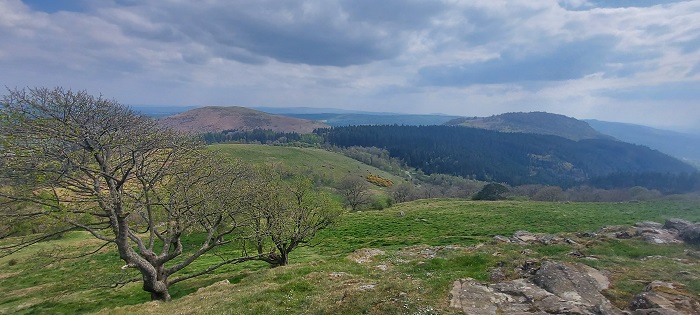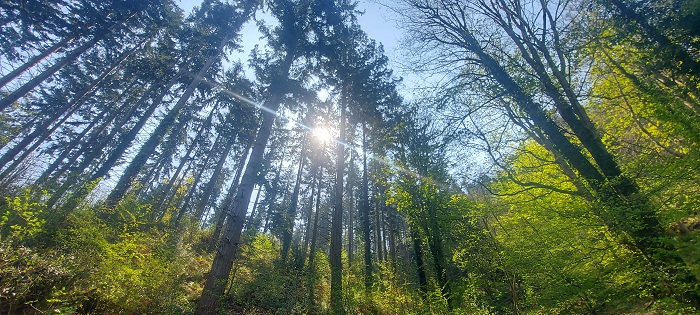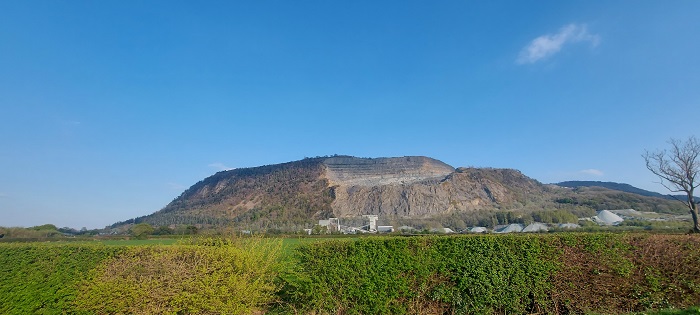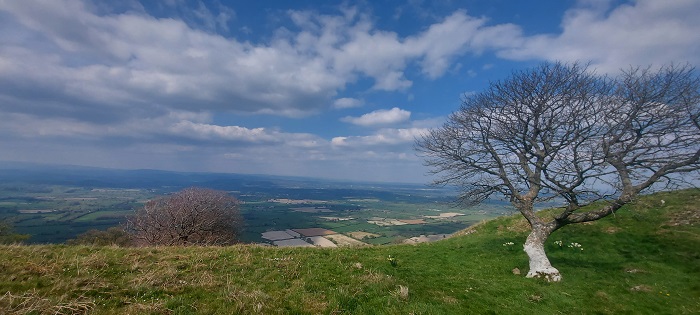Welshpool Forest Resource Plan
Feedback updated 28 May 2024
We asked
We asked for your comments on the Forest Resource Plan for the Breidden which is a mixture of privately owned woodland and some Welsh Government Woodland Estate all managed by Natural Resources Wales. The Forest Resource Plan is a high level plan that determines the overall management of the woodlands, setting out the long term objectives for each woodland (ancient woodland restoration, native woodland management, or standard forestry management, for example), and the general approach to any restocking, such as with native broadleaf or coniferous species. But the plan does not go into the specific day to day management of the estate, this is provided by our Land Management and Forest Operations Team whose work the plan informs.
You said
We had a low level of responses to this consultation with only 3 people taking the time to provide comments. However, we know that these woodlands are important due to the number of visitors every year. Thank you to everyone who took the time to respond.
There was support for the objectives of the plan with aims to identify, protect and maintain historic features, expand the amount of native broadleaf and enhance biodiversity.
There were concerns over the maintenance of footpaths within the Breidden plan and disappointment that this wasn’t included as an objective and there was some dissatisfaction about the name of the plan being Welshpool, as opposed to the Breidden, as the site is known locally.
We did
We have taken the comments received on board and they have been shared with relevant teams within Natural Resources Wales so that where possible they can be actioned or recorded to be taken into consideration for future management.
We have updated the objectives to include “Maintain and improve visitors experience by providing a safe and enjoyable diverse environment. Public rights of way and other open access areas of the plan are well maintained, and this should continue. The continued management under LISS with more areas recruited in the future and other areas of gradually restoring ancient woodland will enhance the aesthetics of the forest in the long-term.”
The decision has also been made to change the name of the plan to the Breidden Forest Resource Plan.
We are working hard to balance the demands on the woodland to provide benefits for communities, for biodiversity and the environment, and for the economy. We are also working hard to meet the challenges provided by diseases such as Phytophthora Ramorum, which has impacted larch, ash die back, and other diseases that are affecting the resilience of the woodlands.
Overview
Natural Resources Wales is responsible for the sustainable management of the publicly owned woodlands and forests of Wales. They are managed for the benefit and well-being of the people who visit them and depend on them for their livelihood. This responsibility includes improving their biodiversity and long-term resilience to climate change so that future generations will also be able to enjoy the benefits they provide. Every ten years Natural Resources Wales reviews the long-term management plans for each forest area. These are compiled in a new Forest Resource Plan.
Welshpool Forest Resource Plan (FRP) includes Welshpool forest and three smaller satellite blocks, totalling an area of 253.2 ha. Nestled between the A458 Welshpool-to-Shrewsbury road and the River Severn floodplain, the FRP is predominantly coniferous but also contains substantial areas of broadleaves and open agricultural ground. Welshpool forest lies on the Welsh side of the England-Wales border, with the eastern tip of the forest demarcating the line of the border. The town of Welshpool lies approximately 7 km south-west of the FRP.
The surrounding habitat of the Welshpool FRP blocks consists of enclosed grazed farmland interspersed with hedgerows and smaller fragments of both broadleaf and coniferous forest. Welshpool forest contains a large network of Public Rights of Way that connect it to the surrounding landscape, along with a public car park at its base and a prominent historical landmark – Rodney’s Pillar – on its summit.
The Welshpool FRP falls into two watersheds of the River Severn catchment: the River Camlad confluence to the Bele Brook confluence; and from the Bele Brook confluence to the Sundorn Brook confluence. Both watersheds have been rated as ‘Moderate’ under the Water Framework Directive assessment.




Below is a summary of the main objectives for the Welshpool Forest Resource Plan, followed by indicative maps for the Long Term Vision, Forest Management and Restocking strategies proposed for the forest:
Main Objectives, Opportunities & Priorities:
- Continue to identify and restore ancient woodland site features and areas of conservation interest.
- Continue to maintain a sustainable supply of timber production through the design of felling and restock species choice.
- Increased successional / riparian woodland areas for the improvement of habitat resilience and landscape scale habitat linkages.
- Using a combination of natural regeneration and carefully selected restocking to diversify the forest species composition to increase resilience to pests and diseases whilst building a robust forest for future generations.
- Increase structural diversity through the implementation of Low Intervention Silvicultural Systems.
- To further blend the visual impacts of the woodlands into the wider landscape, helping to enhance the National Landscape Characters of the Areas in which they sit.
- Identify and protect important heritage and archaeological features, including the historic natural environment.
- Maintain and improve visitors experience by providing a safe and enjoyable diverse environment.
The following document helps to explain some of the categories shown on the maps below:
Map 1: Long Term Vision
Map 2: Forest Management & Felling Strategy
Map 3: Forest Types & Restocking
Summary of the main changes that will occur in the forest:
- The progression towards the restoration of ancient woodland sites by the removal of conifer and the creation of native broadleaf habitat.
- An increase of areas allocated to Low Impact Silvicultural Systems (LISS).
- An increase of areas managed as native broadleaves.
- An increase in broadleaf and conifer diversity – both in species and in age – in order to increase the woodlands’ resilience to pests and diseases.
- An increase of areas managed as priority open habitat.
- Increased small areas of open space around the scree and rock faces of the Breidden Hill SSSI, improving the habitat suitability for the rare assemblages of plants found there.
Why your views matter
We would like to know your opinion and views on the new plans for Welshpool Forest so it can help us improve its long-term management.
Areas
- Welshpool Castle
- Welshpool Gungrog
- Welshpool Llanerchyddol
Audiences
- Management
Interests
- Forest Management

Share
Share on Twitter Share on Facebook